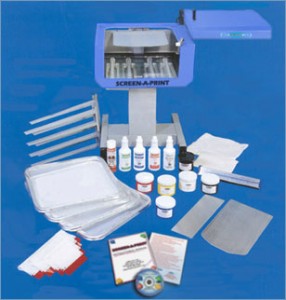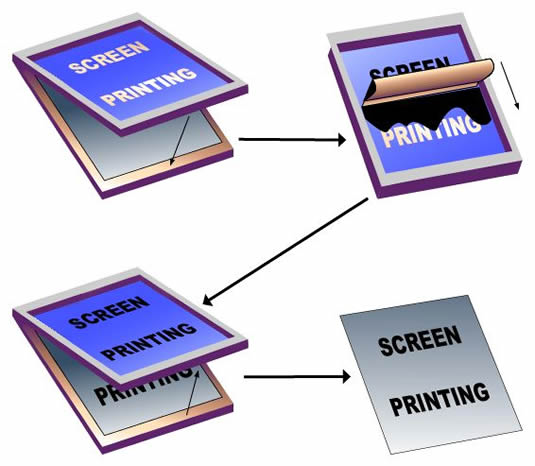Excellence work and short prices guaranteed. Advertise your business or your communication. We’ll help you obtain your logo, your artwork or your ideas on the shirts, caps or cog that you desire to see them on. That’s come again? we do.
Applications
Screen-printing is debatably the most versatile of every one printing processes. It can be used to turn out on a wide variety of substrates, including paper, paperboard, plastics, glass, metals, textiles, and many other equipment.Including paper, plastics, glass, metals, nylon plus cotton. Some common products from the screen printing trade include posters, labels, decals, signage, and every one types of textiles plus electronic circuit boards. The advantage of screen-printing over other print processes is that the press can print on substrates of any shape, thickness and size.
A significant characteristic of screen print is that a greater thickness of the ink be able to be applied to the substrate than is possible by other printing techniques. This allow for some extremely interesting effects to be not possible using other printing method. Because of the simplicity of the application procedure, a wider range of inks plus dyes are available for use in screen printing than for use in some other printing process.
Utilization of screen-printing presses has begun to increase since production rates contain improved. These have been a result of the development of the automated plus rotary screenprinting press, improved dryers, and U.V. curable ink. The main chemicals used include screen emulsions, inks, with solvents, surfactants, caustics and oxidizers used in screen reclamation. The inks used vary dramatically in their formulations (GATF 1992b).
Screen Printing Process Overview
Diagram of Image Carriers new in Printing Processes
Screen-printing consists of three elements: the screen which is the image transporter; the squeegee; plus ink. The screen-printing process uses a porous mesh stretched resolutely over a frame made of wood or metal. Proper tension is essential to precise color registration. The mesh is made of porous fabric or stainless steel mesh. A stencil is produced on the screen either manually or photochemically. The stencil defines the image to be printed in other printing technologies this would be referred to as the image cover.
Screen-printing ink is applied to the substrate by placing the screen in excess of the material. Ink by a paint-like consistency is placed onto the top of the screen. Ink is then forced through the well mesh openings using a squeegee that is drawn crossways the screen, applying pressure thereby forcing the ink through the unlock areas of the screen. Ink will pass through simply in areas where no stencil is applied, thus forming an image on the print substrate. The diameter of the threads and the thread count of the mesh determination determine how much ink is deposited onto the substrates.
Many factors such as composition, size and form, point of view, pressure, and speed of the blade (squeegee) determine the quality of the impression complete by the squeegee. At one time most blades were complete from rubber which, however, is prone to wear and edge nicks and has a tendency to warp and distort. While blades continue to be made from rubbers such as neoprene, the majority are now made from polyurethane which can produce as many as 25,000 impressions with no significant degradation of the image.

If the item was printed on a manual or automatic screen press the printed product determination be placed on a conveyor belt which carries the item into the drying oven or through the UV curing system. Rotary screen press feed the material through the ventilation or curing system automatically. Air drying of certain inks, though rare in the industry, is still sometimes utilized.
The speed of screen printing production was once dictated by the drying speed of the screen print inks. Do to improvements plus innovations the production rates have greatly increased. Some specific innovations which affected the production rate and have also increased screen press popularity include:
1. Development of automatic press versus hand operated presses which contain comparatively slow production era.
2. An improved drying system which significantly improves manufacture rate.
3. Development and improvement of U.V. curable ink technologies
4. Development of the rotary screen force down which allows continuous operation of the press. This is one of the more new technology developments.

